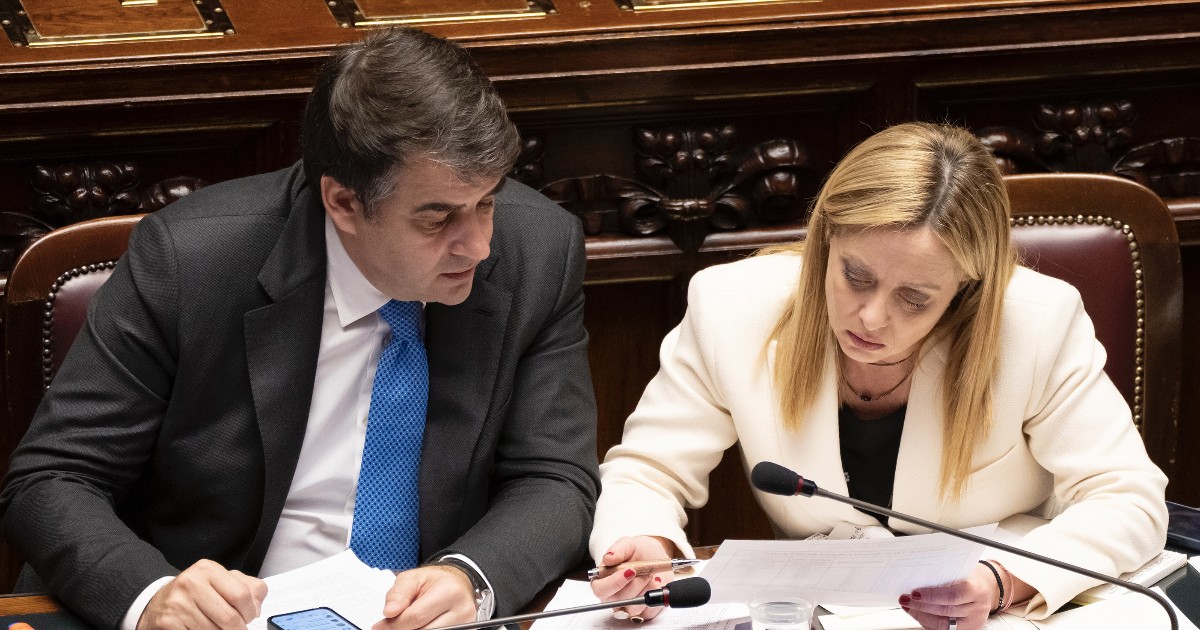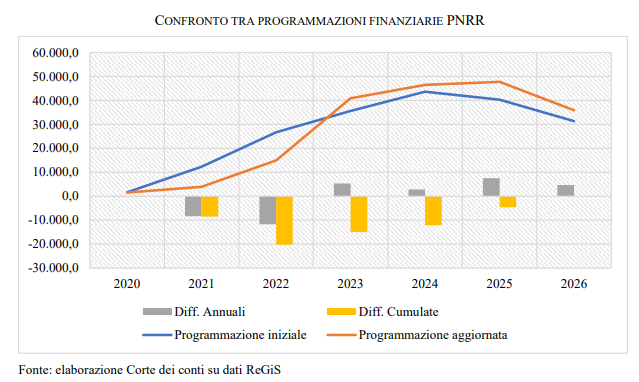
Solo 79 million against i 343 budgeted (out of 15.6 billion total) for the “mission” Salute. Less than 240 million against i 631 scheduled for Inclusion and social cohesionwhich has billions worth of the Pnrr available 19,8 total. E 2.4 billion against the 6.4 that should have been used for the ecological transition, the heaviest chapter with 59,4 throughout the plan. These are the figures that Italy has managed to spend on the former three years of operation of the National recovery and resilience plan compared with the schedule initial of the government Draghi. The picture, which gives the measure of the quagmire in which the Recovery ended and explains the appeal of the head of state Sergio Mattarella to “go to the pole”, emerges from the worrying survey of the Court of Auditors which will be presented to Parliament on Tuesday. The tabel of the document do not limit themselves to stipulating that as of December 2022 – excluding disbursements for tax credits that operate in automatic – solo 10 of the 191.4 billion of the Recovery and resilience facility (6%) had been “grounded”. But they also allow you to reconstruct in some detail which chapters discount the most delaysdue as is known to a huge lack of administrative capacity not filled in time as well as contingent problems such as theincrease in raw material costs which slowed down the awarding of some contracts.
According to the first forecasts, written in spring 2021, at the end of last year the total expenditure should have exceeded 40 billion. A figure that was then repeatedly revised downwards. At the end of 2022 the new minister Raffaele Fitto announced that it would be difficult to reach the 21 billion estimated in the Nadef autumnal. And now the accounting judiciary further lowers the bar: based on treasury data and the reporting system Regis you get to 23 billion (12% of the total) just by understanding ecobonus, sismabonus e credits for the purchase of capital goods envisaged by the plan Transition 4.0. Exits which, however, work on the basis of the requests of businesses and households e they say nothing about the management capacity of the public administration. Without considering those three measures, it drops to 10 billion.
But what matters in this case too is the comparison between actual expenditure and initial plans. The Court notes that only three components out of 16 ran longer than envisaged in the timetable, once again without building bonuses: we are talking about Digitisation, innovation and competitiveness in the production system (which includes provision of ultra-broadband and fast connections throughout the country), From research to business and Intermodality and integrated logistics. Instead, the progress of the component is zero Sustainable agriculture and circular economystill at 4.8% that of Tourism and culture 4.0, the mission is far behind Salute with the 23% of the budgeted expenditure (proximity networks, structures and telemedicine for local healthcare assistance are at a standstill) e Inclusion and cohesion 37.8%. The sub-category Social infrastructures, households, communities and the third sector, which includes interventions in favor of non self-sufficient elderly people but even the temporary housing for the homeless and the overcoming of the ghettos in which agricultural workers live in some areas of Italy, does not go beyond 27.6% of spending.
The only mission for which the ratio between expenditure incurred and total resources exceeds 10% is “Infrastructures for sustainable mobility” (16.4%), helped by the fact that many projects that had been lying there for years ended up in there in the drawers of the Ministry of Transport. Education and research, Inclusion and cohesion e Salute do not reach 5%, notes the accounting judiciary. A debacle which has imposed substantial updates to the plans: the expenses originally foreseen in the first three years have been moved forward in the hope that the various simplification measures and the expected stabilization of fixed-term hires in the PA will accelerate grounding. The problem is that now the expected recoveries are shaking the veins: “Nel two-year period 2024-2025 peak spending is estimated, with annual values that will exceed 45 billion, up, respectively, by 2.8 and 7.5 billion compared to the starting time frame”. The accounting judiciary warns that this is the last call: the new financial timetable must now find “full correspondence in the implementation progress of the measures that make up the Plan, limiting further revisions and consequent forward transfers of expenditure”.
An objective that continues to appear out of reach given that, as the Court recalls in the second volume of the report, “for months, particularly in the South, there have been complaints about a shortage of personnel. Not only from a numerical point of view but also qualitative. In fact, many administrations they do not have adequate skills to follow procedures as complex as those of the Pnrr. The feedback made with the Administrations concerned shows that, despite the considerable effort made to intensify recruitment, they remain in the offices penalizing conditions such as the high average age and the insufficient presence of the related skills (from engineers, procurement specialists, computer scientists, Ict technicians) especially if combined in a digital key. A situation which in turn depends, at least to a certain extent, on the substantial hiring freeze which characterized the past decade, for the consolidation of public finances“. In short, austerity takes its toll.
